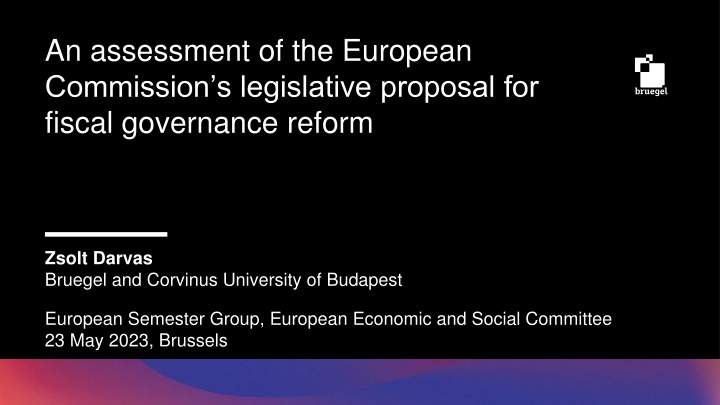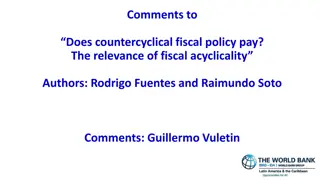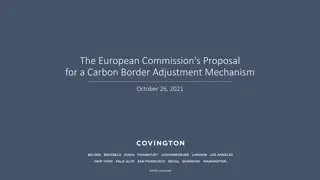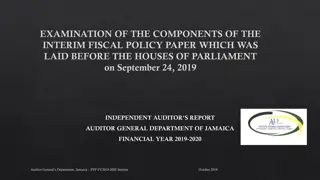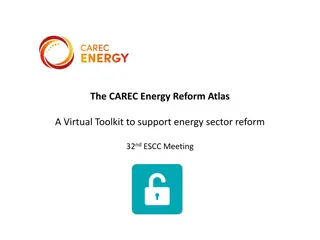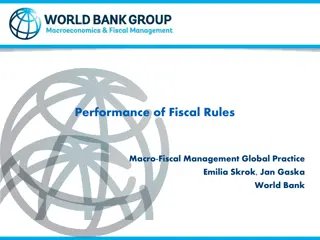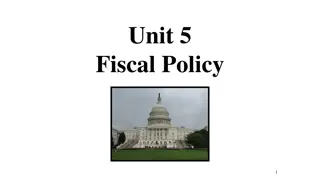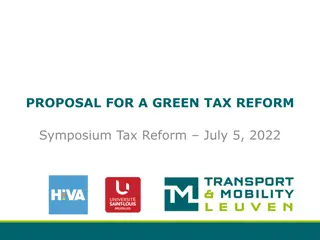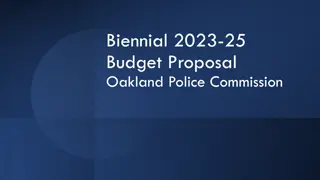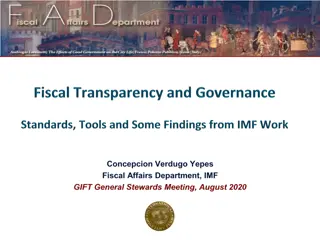Assessment of European Commission's Fiscal Governance Reform Proposal
The European Commission's legislative proposal focuses on debt sustainability and introduces a single operational indicator for public expenditure growth. The proposal integrates fiscal and macroeconomic imbalance surveillance, emphasizing comprehensive national fiscal-structural plans. Despite the existing 3% deficit and 60% debt ratio requirements, the proposal suggests maintaining a downward trajectory for debt ratios above 60% through careful risk assessment. Safeguards and compromises aim to ensure fiscal responsibility without compromising economic stability.
Download Presentation

Please find below an Image/Link to download the presentation.
The content on the website is provided AS IS for your information and personal use only. It may not be sold, licensed, or shared on other websites without obtaining consent from the author.If you encounter any issues during the download, it is possible that the publisher has removed the file from their server.
You are allowed to download the files provided on this website for personal or commercial use, subject to the condition that they are used lawfully. All files are the property of their respective owners.
The content on the website is provided AS IS for your information and personal use only. It may not be sold, licensed, or shared on other websites without obtaining consent from the author.
E N D
Presentation Transcript
An assessment of the European Commission s legislative proposal for fiscal governance reform Zsolt Darvas Bruegel and Corvinus University of Budapest European Semester Group, European Economic and Social Committee 23 May 2023, Brussels
The Commission fiscal rule reform proposal is bold and comprehensive Focus on debt sustainability A single operational indicator: a measure of public expenditure growth Such a framework (proposed by many before, including me) has numerous advantages compared to the current fiscal framework Further attractive features of the European Commission s proposal: the integration of fiscal and macroeconomic imbalance surveillance the requirement for comprehensive national fiscal-structural plans the requirement for making all relevant documents publicly available Since an EU Treaty change is unrealistic, the 3% deficit and 60% debt ratio requirements remain
The main idea The main idea is that for countries above 60% debt ratios, the debt ratio is kept on a plausibly downward path after an adjustment period of 4 or 7 years. Plausibility of the debt ratio decline is assessed against two criteria: public debt ratio should be declining, or stay at prudent levels, under the deterministic scenarios of the Commission s medium-term public debt projection framework described in the Debt Sustainability Monitor 2022 , the risk of the public debt ratio not decreasing in the 5 years following the adjustment period of the national medium-term fiscal-structural plan is sufficiently low. The risk is assessed with the help of the Commission s stochastic analysis. The deterministic simulations include scenarios with lower structural primary balance; adverse interest rate/growth scenario; financial stress can be tough for some countries The latest Debt Sustainability Monitor estimates stochastic probabilities of debt(2027)>debt(2022) around 50% for Italy, Spain, France, Belgium, Croatia, Hungary, Finland for the first application, debt(2033)>debt(2028) or debt(2036)>debt(2031) will be checked, this stochastic criterion can be tough for some countries
Compromises While the debt sustainability criteria discussed on the previous slide can be tough, to reach a compromise, some safeguards were included: Reduced debt ratio: the debt ratio at the end of the planning horizon must be smaller than before the period began this can potentially require large upfront fiscal adjustment No backloading: the average annual adjustment over the period of the national medium- term fiscal structural plan should not be lower than the average over the entire adjustment period seems sensible to me Half percent minimum adjustment under excessive deficit procedure remains might require a larger adjustment than what is needed by the debt sustainability analysis We are currently analysing whether these additional criteria would be more binding than the two debt-sustainability criteria (paper expected in a few weeks)
Missed opportunity to foster green transition Most EU countries must implement fiscal consolidation Politicians prefer cutting investment over current spending and unpopular tax increases, partly because the interests of future generations have less electoral support Now, a major increase in green public investment would be needed A good solution for fostering climate transition would have been to exclude net green public investment from the fiscal indicators used to measure compliance with the EU s fiscal rules for countries without substantial debt challenges (Darvas and Wolff, 2023, https://doi.org/10.1080/14693062.2022.2147893 ) A lack of a substantial increase in green public spending risks the EU missing its climate targets, which could diminish the determination of non-EU countries to reach their own. But the damage to the climate is irreversible.
